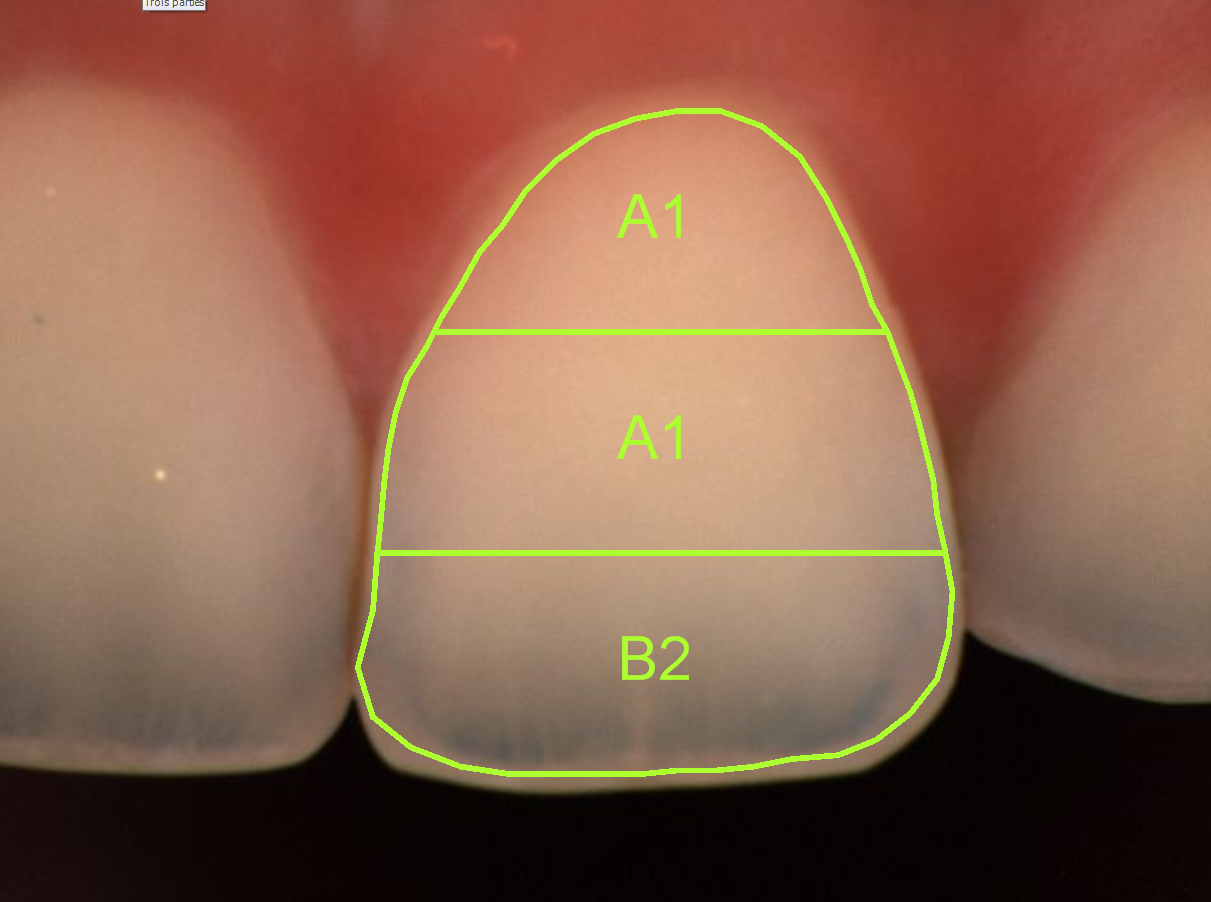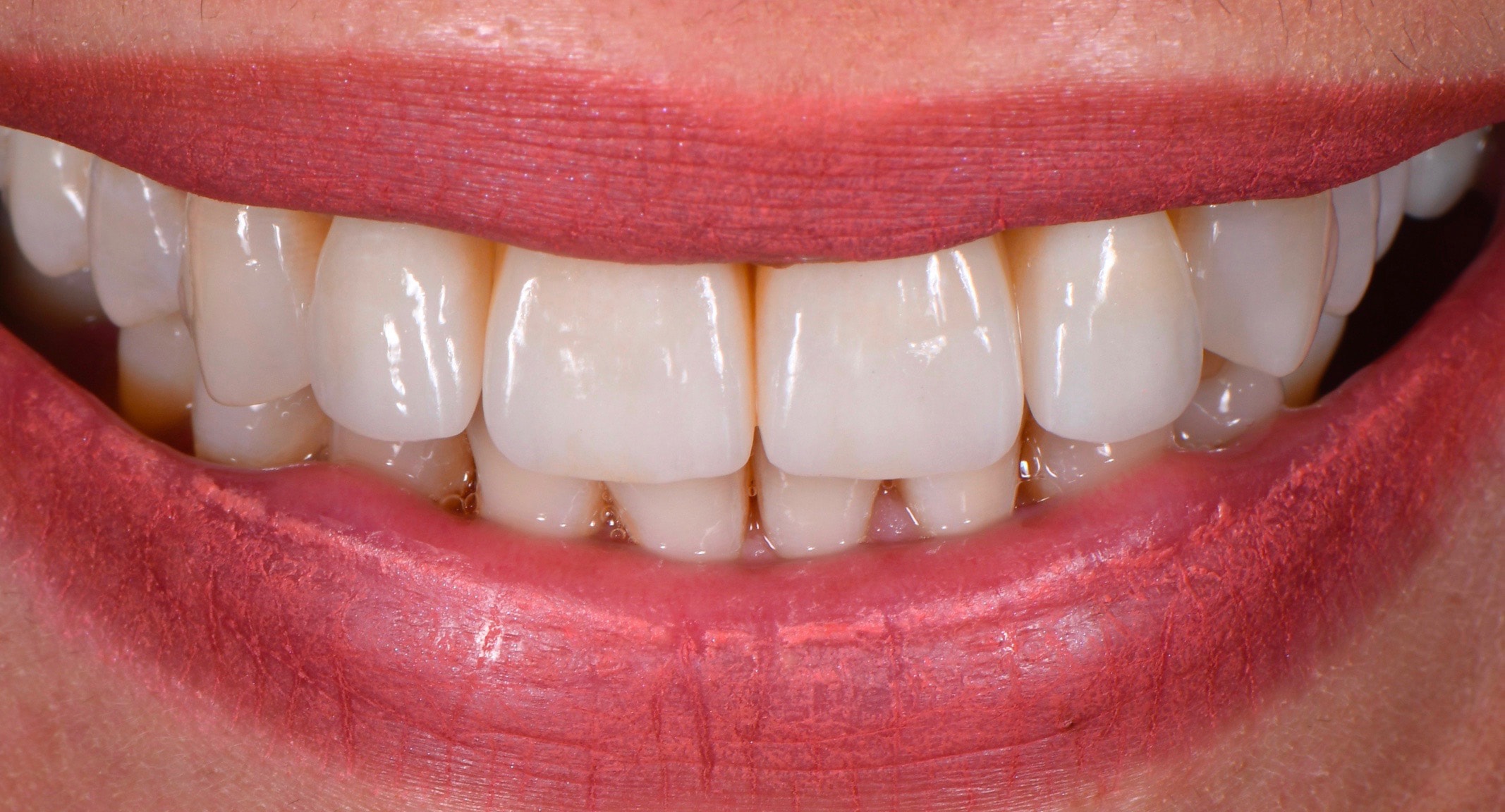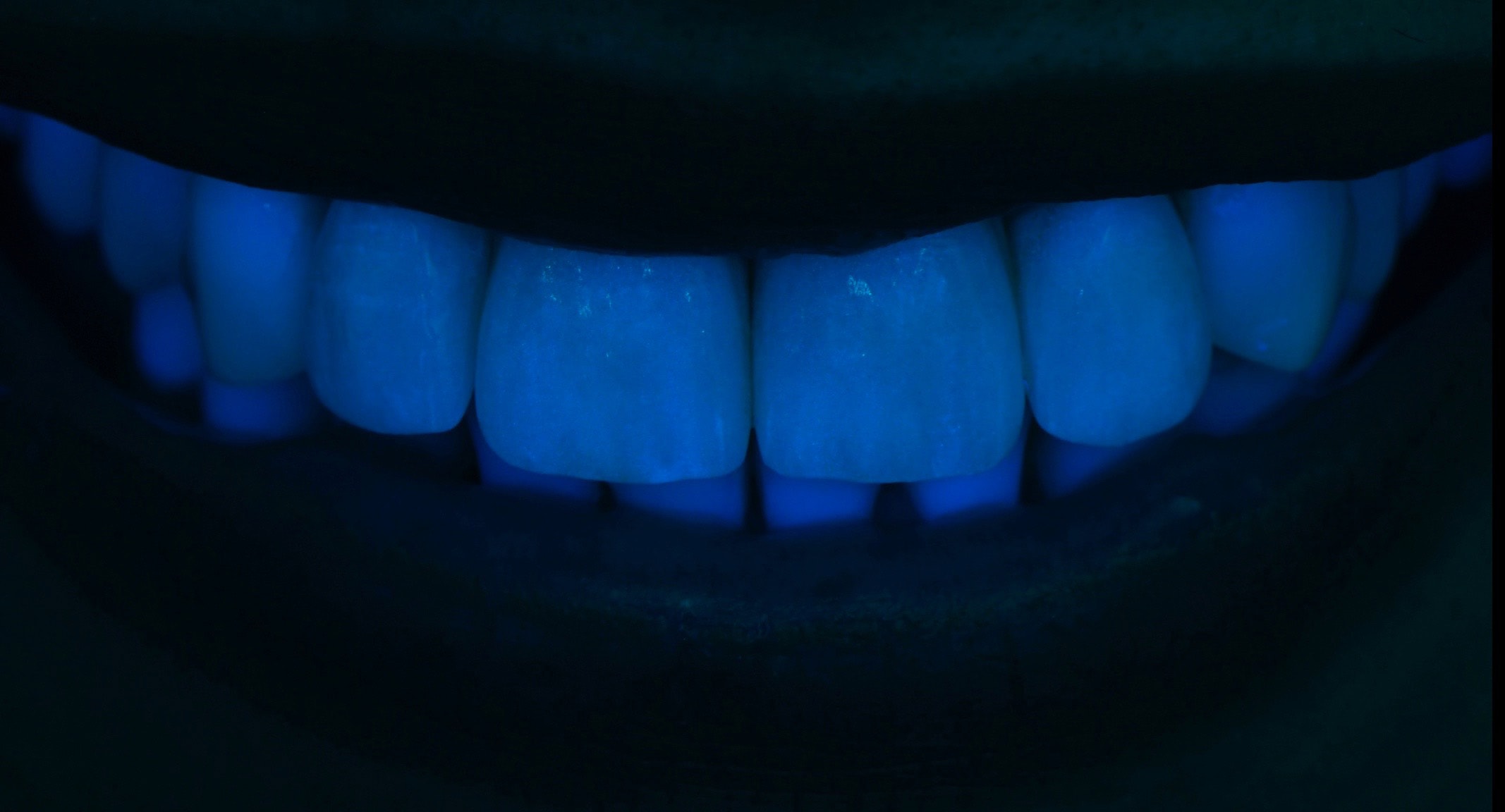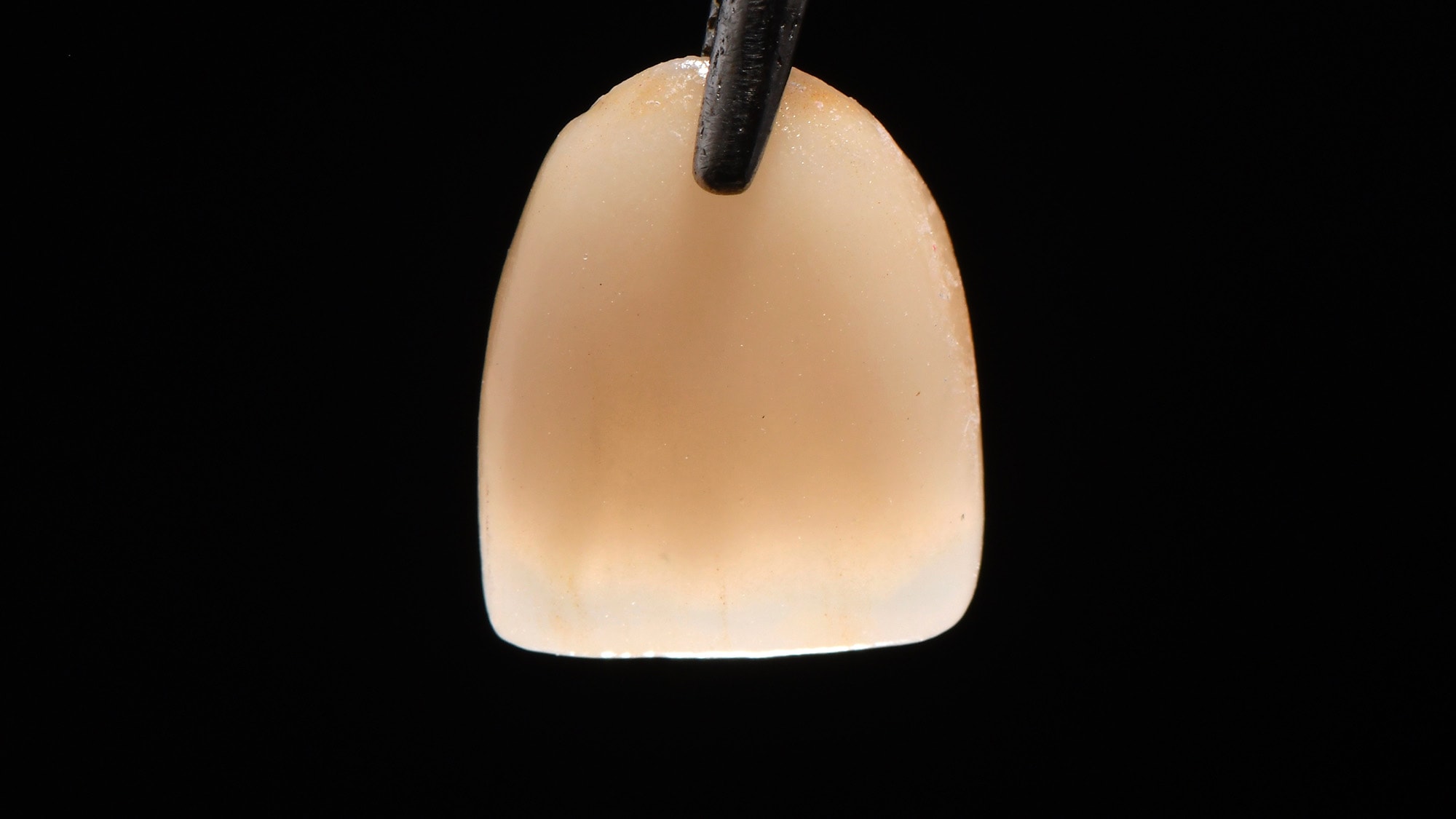
There are several types of ceramics, the most commonly used in dentistry are zirconia, glass and feldspar ceramics.
Zirconia being relatively opaque but very strong, it is indicated to strengthen the bottom teeth (molars or premolars), as well as the front teeth when the goal is to mask teeth discoloration.
Glass ceramics can be used on both front and back teeth, provided that the tooth to be reinforced is not too colored. Feldspar ceramics are the most aesthetic but also the most fragile, and are indicated for the front teeth.
Glass ceramics
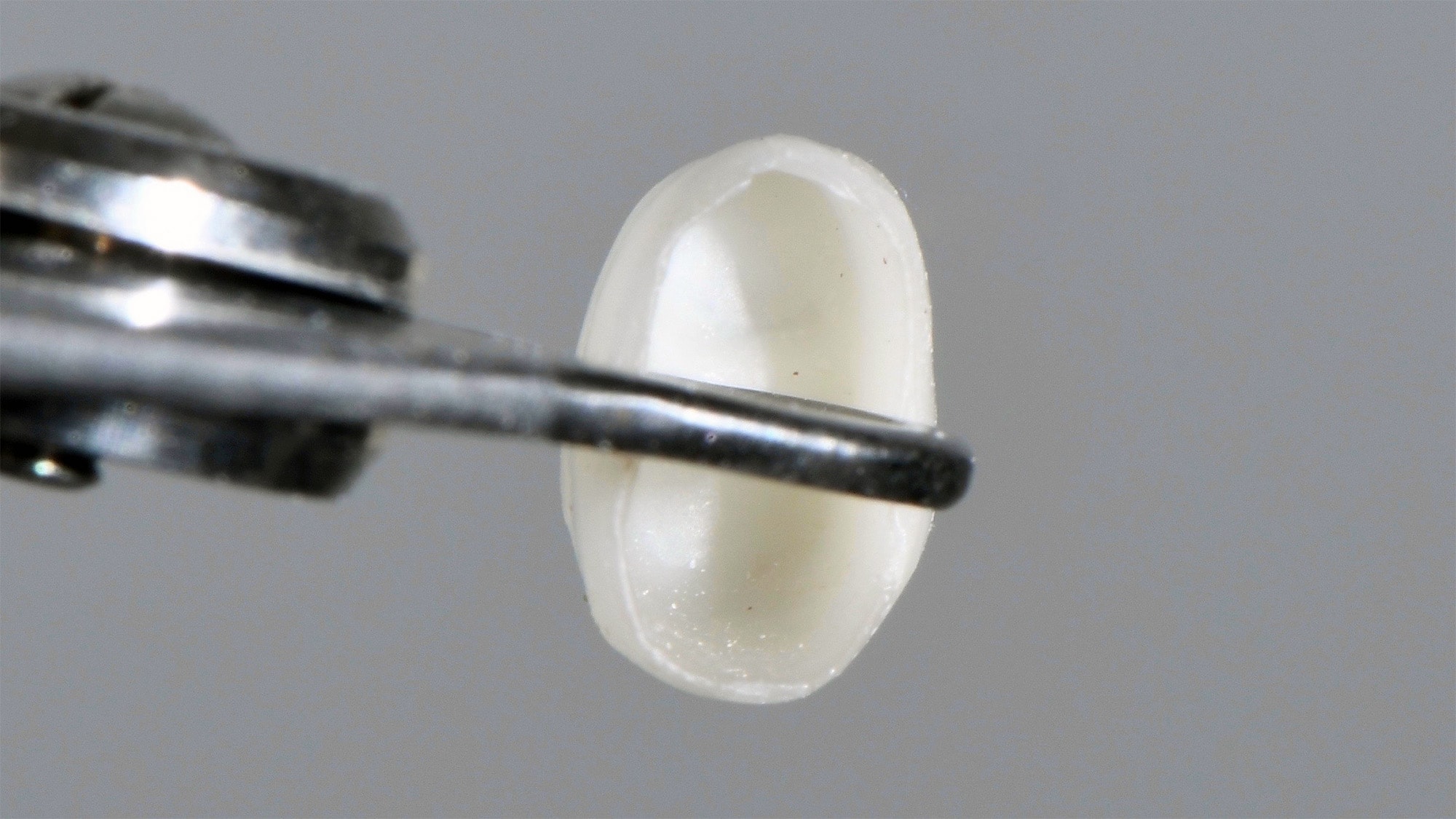
Zirconia
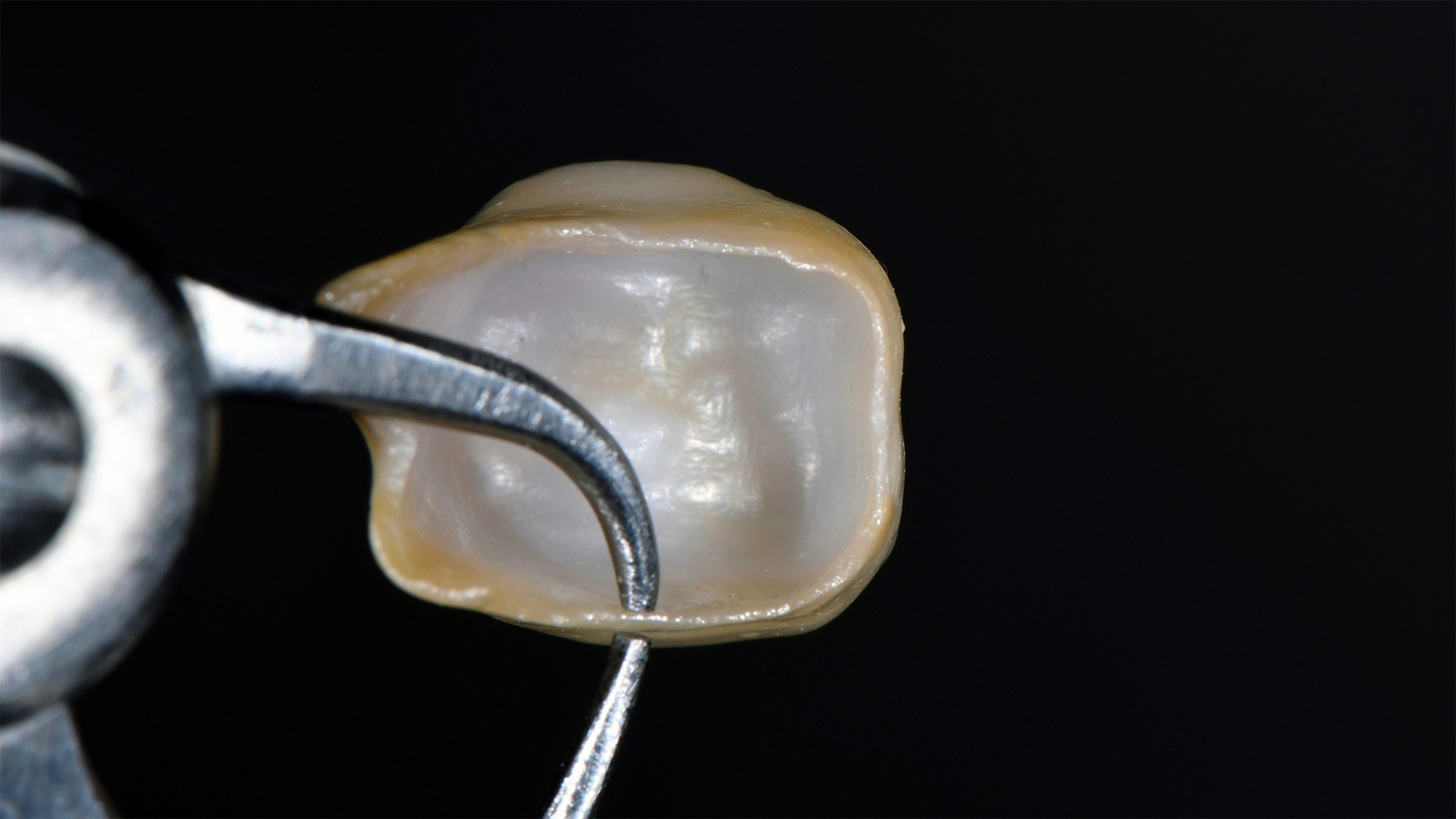
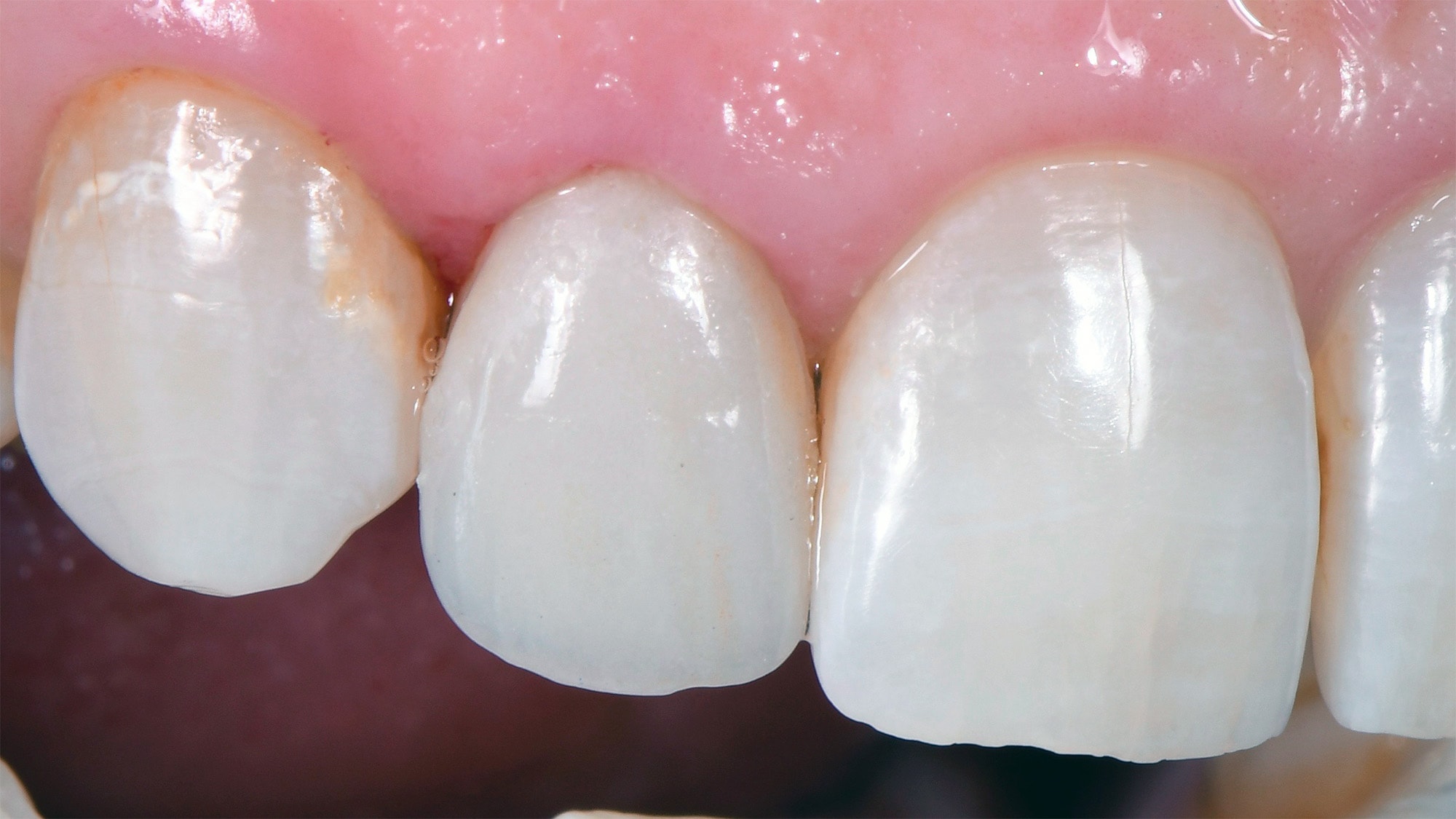
Choice of ceramic texture
Natural teeth have very varied surface conditions.
Surface condition refers to the presence or absence of very fine grooves or indentations on the surface of the tooth, which influence the reflection of light.
Some teeth may have a very pronounced surface condition, such as young teeth. The older the tooth, the more the surface condition is reduced, the tooth becomes smoother.
It is important to consider this parameter to ensure that ceramic restorations (facets or crowns) fit naturally into the patient’s smile.
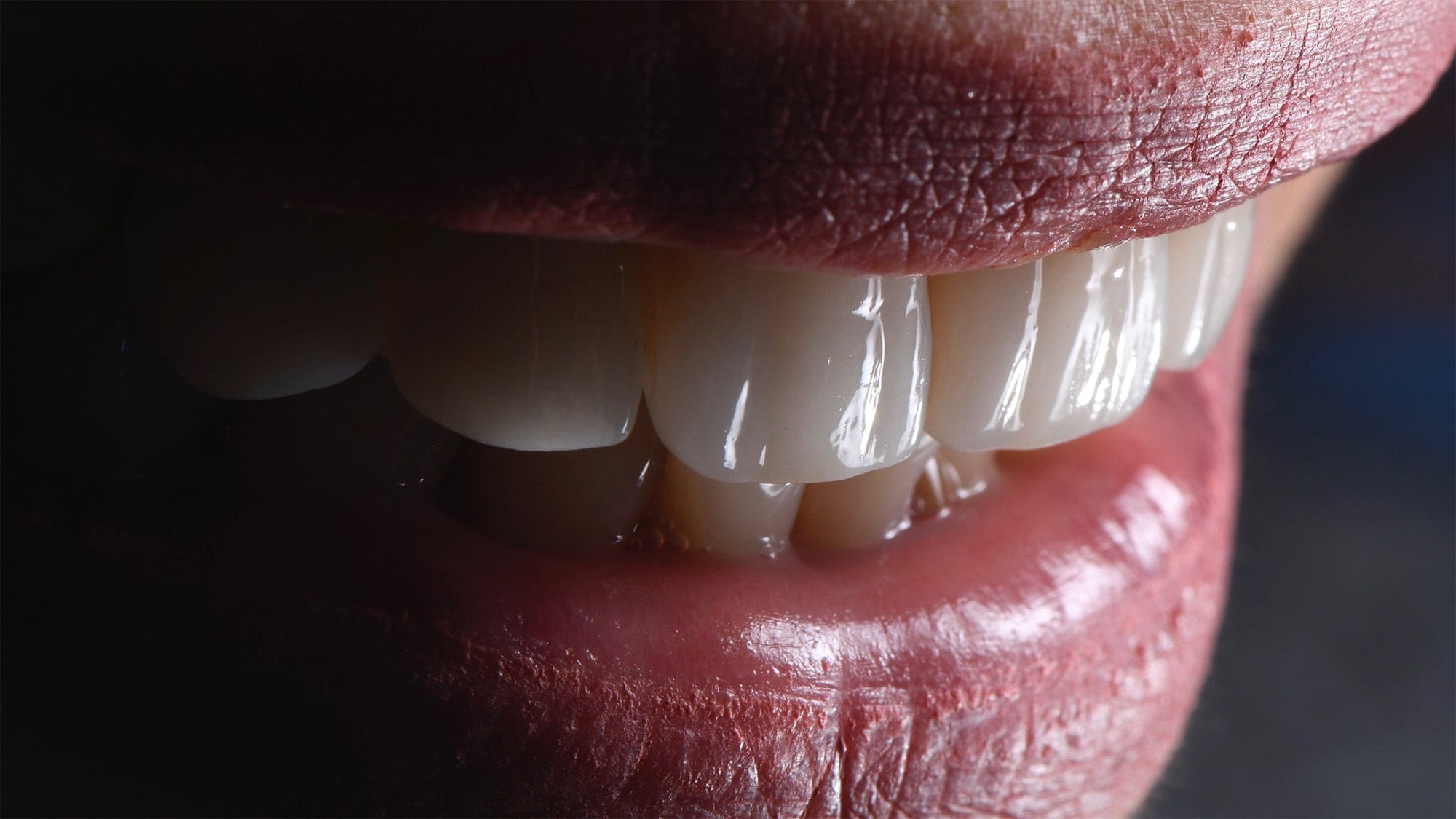
Choice of color
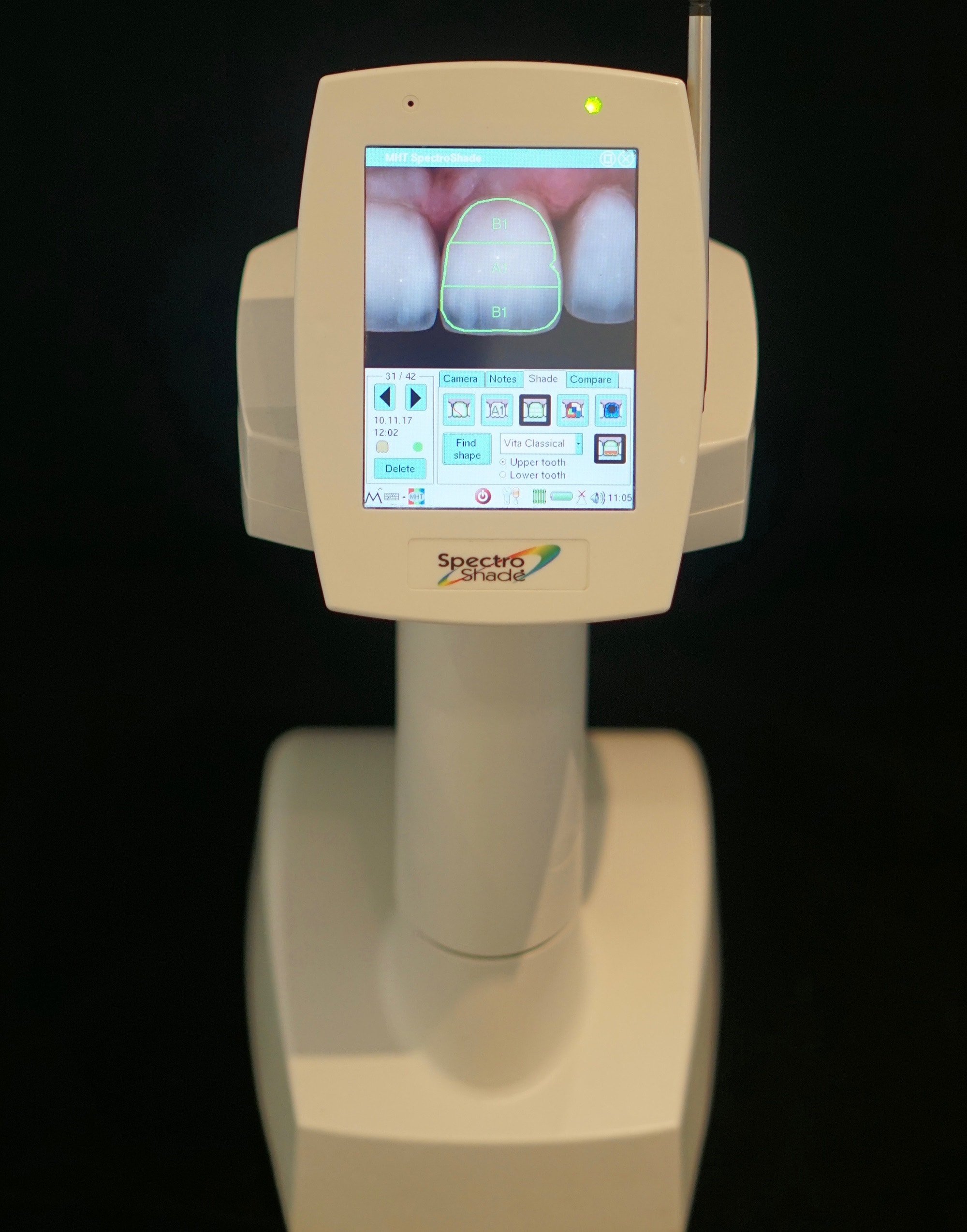
Choosing a color for ceramic restoration is very important in order to achieve a natural look.
We should rather speak of colors, in the plural, because a tooth is not uniform and its color generally clears from its base to its free edge.
In addition, the natural tooth has a bi-laminar structure: the enamel is translucent and the opaque dentine is the successive interaction of the light with its two layers which gives the natural tooth its color. A young tooth has a thick, opaque enamel that gives it a bright, clear color, while an older tooth is more translucent and appears grayer.
The spectrophotometer is a very useful tool for communication with the prosthetist, as it gives an objective value of the hue and translucency of the teeth to be reproduced.
